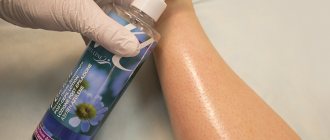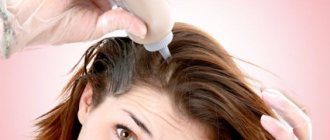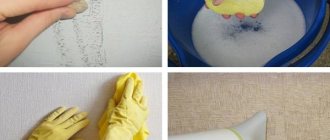Vegetable oil
How can I remove resin?
The most affordable remedy is vegetable oil, olive or sunflower. They need to generously lubricate the area with resin and rub it into the tangled hairball. After some time, it will become more pliable, the resin will gradually begin to lag behind the hairs, then it needs to be carefully combed out with a fine-toothed comb. After the resin is removed, you need to wash your hair several times with shampoo to wash away the oil from your hair. Then rinse your hair with conditioner, which will make it easier to comb matted hair.
Resin in hair: preparatory work
First of all, separate the stuck hair and place the strand on the cellophane film. This will prevent the remaining hairs from sticking together.
There are several simple ways to remove resin from your hair.
To remove resin from hair, prepare:
- scissors;
- hair dryer;
- plastic combs with sparse teeth;
- vegetable oil;
- ice;
- baking soda;
- chemical solvent: alcohol, acetone, kerosene, etc.
Shampoo and nourishing conditioner will remove any solvent remaining on the hair. You probably won't need all the funds. However, if there is a lot of resin on your curls, try several methods.
Baby cream
Vegetable oils are not the only fat-containing product that can help cope with oleoresin. How to remove resin from hair after a bath? Baby cream is perfect for this purpose. And this is the most gentle, accessible and pleasant remedy. The cream smells good, it is hypoallergenic, softens the skin if particles of oleoresin get on it and reduces irritation. It can be used by both adults and children.
Resin is removed using baby cream as follows: the product is rubbed in and then removed from the hair with a thick brush along with the resin. Repeat the required number of times, then wash off the remaining cream with soap.
How to remove resin from hair with other fat-containing products? This is done using the same method, and as analogues you can use peanut butter, mayonnaise, Vaseline, massage oil, body milk, etc.
Features of cleansing different types of curls
When choosing a product, it is important to consider the condition of the hair. Not only the effectiveness, but also the safety of a particular method will depend on the structure and density:
For sparse and thin hair, vegetable oil or any fat-containing product is better.
This could be mayonnaise, Vaseline, fatty baby cream. Apply generously to the problem area and cover with cellophane or film for 30-40 minutes. Then comb the strand, simultaneously removing soft resin lumps.- For thick combination hair, the method given above may not be effective enough. In this case, you should resort to the ice cooling method. This will take a lot of time, but will have minimal traumatic effect.
- For oily hair, you can use alcohol, acetone, nail polish remover, and other acceptable solvents. However, before using this method, it is worth trying a more gentle method.
How to remove resin from hair
Ask your family to help you. If the resin gets on the ends of your hair, then simply cut off this part of the hair with scissors. If cutting your locks ruins your hairstyle, try the following methods.
For thin hair, comb out the resin using a plastic comb. Pre-lubricate the hairs around the stuck resin with vegetable oil. Another safe method is removal with soda. Dissolve 2 tbsp. l. baking soda in 300 ml hot water. Rinse the contaminated strands with the resulting solution. Do this procedure several times.
We suggest you read: How to remove yellow stains from white sneakers after washing, how to wash white Converse
The resin is easily removed if it is frozen. Cover the resin with ice cubes. After it freezes, crumble it with your fingers and remove. Heat can also be used to remove resin. To do this, use a hair dryer with a comb attachment. Heat the strand stained with resin and wipe it with a dry cloth. When you have removed most of the sticky mass, comb your strands with a hot brush. Clean the resin off it periodically.
Remove resin from clothes or shoes
Resin stuck to clothes is no less troublesome than resin stuck to hair. And you need to get rid of it no less carefully, especially if the item is dear to you. To prevent the cleaning procedure from causing damage to your items, we recommend considering the following cleaning methods.
- Cleaning with ethyl alcohol. It is best to let the resin dry; to do this, place the clothes in a room on the shady side for several hours. After the resin has hardened, scrape off the main part of it with your fingers, and wipe the remainder with a rag moistened with alcohol.
- Ironing. This method is similar to the described method for removing resin stuck in hair using a hair dryer. Place unnecessary rags or paper napkins on the ironing board. After this, place the soiled clothing face down on it, and cover it with gauze on top. By smoothing the contaminated part, you melt the resin, which begins to be absorbed into the placed napkin. After the procedure, you need to wash your clothes with powder.
"Coca Cola"
Coca-Cola is a very useful drink in the household. You can drink it, clean the bathtub from rust, and rid the kettle of limescale. The activity of the drink is explained by its composition: Coca-Cola contains carbon dioxide and phosphoric acid (which, by the way, causes thirst, which makes it almost impossible to get drunk with cola). These same components are also found in other sweet sodas, such as Fanta or Sprite.
And they are the ones who will help get rid of the resin in your hair. How to remove tar from hair using cola? To do this you need to prepare a solution: 0.5 l. soda for ½ tbsp. l. baking soda. Stir and dip the damaged strand into the solution for 10 minutes. Rinse hair thoroughly with shampoo.
Methods for removing tar from the scalp
A drop of resin in the hair may be a surprise for admirers of the Russian bathhouse, camp life and walks in the forest. A lump of natural resin, called resin, can cause a lot of unpleasant emotions, since it is not easy to remove the resin from the strands. Sometimes it all ends in failure - the lock of hair has to be cut off. Therefore, you need to know how to remove resin from hair without such drastic measures.
[ads-pc-1][ads-mob-1]
Proven Hair Removal Products
There are many methods that have received good reviews. The list of effective folk remedies includes:
- soda;
- ice;
- solvent (nail polish remover, acetone);
- little vegetable;
- turpentine;
- Sprite.
Any of these means requires a special approach. It is worth listening to the advice of knowledgeable people in order to solve the problem as quickly as possible and not harm your hair.
Read how to remove hair dye at home using traditional means.
Learn how to remove gum from hair without using scissors.
[ads-pc-2][ads-mob-2]
Remove resin with alcohol
Popular wisdom says that spruce and pine resins dissolve well in alcohol, turpentine and even kerosene. You can try dropping a little of these products onto a cotton pad and wiping your strands with it. According to reviews, this method is effective. True, you should not use vodka for this procedure; it is preferable to purchase pure medical alcohol at the pharmacy.
Pure gasoline (bought for refilling lighters), although quite caustic, also copes well with tarry contaminants. Gasoline is applied in the same way as turpentine; after the manipulation, the hair is thoroughly combed and the hair is washed under running water.
This is important to know! Before starting the procedure, you must make sure that you are not allergic to caustic substances or have individual intolerances. You can easily recognize an allergic reaction by any strange rashes, irritation, continuous sneezing or severe runny nose.
[ads-pc-3][ads-mob-3]
Cleaning resin with Sprite drink
Cola or Sprite effectively fights any kind of resinous dirt. If you fill your head with carbonated water, and then wrap it with a towel or put on a cellophane shower cap, hold it for a few minutes, rinse and comb your hair, you can get rid of stains in just two or three sessions.
Attention! This method works well against fresh stains and is not suitable if the resin has hardened and turned into lumps.
Some recommend using fizzy drink with substances such as:
- peanut butter;
- stain remover
It is believed that together with sprite, the effect of these products is greatly enhanced. It is always worth remembering safety precautions, especially if you have chosen a stain remover that is quite caustic in composition. You can wash off the resin only with rubber gloves and a respirator.
[ads-pc-4][ads-mob-4]
Nail polish remover and solvents
There are other toxic substances that are often used to clean the resin from the head. How to remove resin from hair using a solvent? A solvent, just like alcohol, acetone, or nail polish remover can quickly and efficiently remove resin from hair. However, as quite toxic substances, they should be used with great caution.
It's worth remembering the rules:
- Any cleaning products are applied to the cotton wool.
- A piece soaked in liquid is carefully passed through the hair, trying to wash off the resin from each strand separately.
- It is better to immediately isolate cleaned hair from the rest, hide it under a cellophane cap to prevent toxic fumes from spreading widely and to prevent resin residues from sticking to clean curls again.
- Correctly carry out the manipulation using a pipette, deliberately dropping liquid onto the frozen pieces of resin.
- It is important to ensure that the caustic substance does not come into contact with the scalp or hands. There is a risk of getting a skin burn.
- It makes sense to carry out the cleansing procedure in the fresh air or ventilate the living space while working.
- The final step should be a thorough washing of the hair, and be sure to rinse with a decoction of medicinal herbs (see Nettle decoction), which will slightly smooth out the harmful effects of the chemical on the hair.
Attention! Pieces of resin can stick to the hair so strongly that it is impossible to see and then remove them on your own. With outside help, the result will be noticeable much faster.
[ads-pc-5][ads-mob-5]
Removing resin with oil and soda
It is clear that this method may seem quite extreme to many. Are there more gentle methods? You can remove resin from the hair on your head using vegetable oil (olive or sunflower oil is especially good). The comb is generously lubricated with vegetable oil, the hair is combed, paying special attention to contaminated areas.
When vegetable oil is applied in copious amounts, the comb should be replaced with a comb with frequent and fairly small teeth. At this stage, you will need to comb your hair, carefully removing the resin from each strand. The method is considered very effective. It allows you to get rid of resin without harming your curls. But, unfortunately, it is not suitable for owners of thick and coarse strands.
Read how to soften hard water at home with soda and silicon.
Do you know how to wash your hair without water and shampoo? Learn about effective ways to cleanse your hair.
Find out which lice comb will help remove resin from your hair.
Thick hair will lose pieces of resin if you wash it in a solution of baking soda and hot water, and then cool it sharply with pieces of ice.
Step-by-step instruction:
- A solution is prepared from 0.5 liters of water and 3 tbsp. spoons of soda.
- Ice cubes are frozen at the same time.
- The hair is washed several times in soda water.
- If traces of sticky resin have disappeared, you can wash your hair with any usual shampoo.
- The remaining strands are treated with pieces of ice.
- The hair is combed very carefully with a fine comb.
[ads-pc-1][ads-mob-1]
Hairdryer removal
The resin tends to heat up fairly quickly and then melt. It is this quality of the substance that is used when cleansing the head with a hot hairdryer. Those who have a hairdryer with a fine-tooth nozzle are especially lucky.
The rules are simple:
- It is important to turn on the hair dryer and warm up the strands stained with resin.
- As soon as the resin mass begins to resemble plasticine and turns into a pliable mass, you need to try to remove it with your hands or a comb.
- As you cleanse, it is important to continue heating the strands while combing your hair.
The manipulation is simple and does not require special preparation. If it is quite difficult to cope on your own, you can ask a loved one for help. As practice shows, it is much easier to carry out the cleaning procedure together.
But what to do if none of the above measures saved your hair? Unfortunately, there is only one way out - put yourself in the hands of a professional and get rid of the stuck resin at the hairdresser. One more piece of advice can be given. Before visiting a park, forest, bathhouse, that is, anywhere where resin may accidentally get stained, it makes sense to put on a hat and enjoy your vacation without fears or fears.
(1 5,00 of 5) Loading...
"Coca Cola"
“Coca-Cola” is a very useful drink in the household. You can drink it, clean the bathtub from rust, and rid the kettle of limescale.
The activity of the drink is explained by its composition: Coca-Cola contains carbon dioxide and phosphoric acid (which, by the way, causes thirst, which makes it almost impossible to get drunk with cola).
These same components are also found in other sweet sodas, for example, Fanta or Sprite.
And they are the ones who will help get rid of the resin in your hair. How to remove tar from hair using cola? To do this you need to prepare a solution: 0.5 l. soda for ½ tbsp. l. baking soda. Stir and dip the damaged strand into the solution for 10 minutes. Rinse hair thoroughly with shampoo.
How to remove resin from hair when there is a lot of it
To do this, use one of the solvents.
- The resin dissolves in pure alcohol. Vodka will not work for dissolution.
- Gasoline and kerosene also remove tar well. It is safer to use gasoline, which is used to refill lighters.
- Acetone or nail polish remover is also effective at dissolving hardened resin.
However, these solvents are harmful to the hair. To minimize it, apply the product to a cotton pad and use it to dissolve the resin. When removing these products, do not spray them all over your hair and skin.
How can you scrub with special compounds?
In addition to household products, resin removal is possible using special reagents that specialize in removing varnishes and paints based on resins and their derivatives.
Gum turpentine
Unlike technical turpentine, it does not burn the skin and does not cause an allergic reaction. Can be purchased at the pharmacy in the form of a balm. The average cost is 200 rubles. for 250 ml.
How to clean with white spirit?
The application technique is the same as with other organic solvents. However, the procedure time should be shortened, since prolonged inhalation of vapors negatively affects the central nervous system. Sold at any hardware store. The average cost is 100 rubles. for 0.5 l.
Acetone
Widely used in everyday life and industry. Dissolves varnishes and paints based on cellulose nitrate. In large quantities, it partially destroys rubber.
It belongs to hazard class IV, which makes it acceptable for removing resin from both industrial equipment and hair.
Sold in hardware and construction stores. Price - from 80 rub. for 0.5 l.
Turpentine
The next method for removing resin from scalp hair is based on the use of turpentine. You just need to purchase special purified gum turpentine, which, unlike its technical counterpart, does not cause burns, irritation or redness on the skin. At the same time, it softens the resin well.
The recipe is as follows: 2 tbsp. l. dilute starch with 8 drops of highly purified turpentine and add 6 drops of ammonia. The resulting mixture is applied to the problem area, the resin is softened and combed out of the hair. Then the curls should be thoroughly washed with shampoo.
How to clean tar from a car?
Look at what of the above tools you have available, carefully read each method of using them and choose for yourself the one that seems more convenient and simpler to you personally.
Solution 1
The “Sprite” drink is used to clean various stains, including softening the resin well. There will be no problems purchasing it - today you can find it in any store. Clean your car with it like this:
- Cover sticky spots with soda.
- Wait for the substance to take effect.
- Use a soft cloth to remove any residue.
- Wipe with a damp and then a dry cloth to remove any remaining product.
Note: This option is only suitable for fresh marks, but if the resin has had time to harden, it will be ineffective. Choose another solution to the problem than removing tar from your car.
Solution 2
Peanut oil and gasoline showed excellent results for removing pine Velcro from the surface of the car. Use what you have available, following this scheme:
- Apply the product to contaminated areas.
- Leave for 10-15 minutes.
- Remove resin elements with a cotton cloth.
Solution 3
If the tar contamination is serious and long-standing, you can remove it using a special stain remover for car surfaces. It is applied like this:
- Clean the surface from foreign dirt and dust.
- Apply the product - it will do from any manufacturer you trust.
- Wait 2-3 minutes - the resin should soften and drain on its own.
- Remove any remaining stain with a rag.
- Rinse the area to be treated with water.
Note: These stain removers are usually very toxic, so take all precautions: wear gloves, a respirator, and work outdoors.
serviceyard.net
Acetone
What else can you do to remove pine resin from hair? Acetone and substances containing it can deal well with sticky substances. For example, nail polish remover. The procedure for working with acetone is as follows:
- Go to a well-ventilated area.
- Apply a little solvent to a cotton pad.
- Apply to the resin for a maximum of 5 seconds.
- Clean off the resin with the same disc.
- Rinse your hair well with plenty of shampoo.
We suggest you read: How to remove wood resin from clothes
Acetone should not be used when removing resin from the hair of children or people with high sensitivity to solvents. Also, this method cannot be used by those who have diseases of the respiratory system. It is strictly forbidden to open the solvent in enclosed spaces, as its fumes are toxic.
You can also find solvents for epoxy resin in stores - DMSO and DMF. Both will work well with tree resin, but you absolutely cannot use them to cleanse your hair and body! They are extremely dangerous and toxic.
In addition, you cannot use SP-6 remover or any acid other than citric acid. These substances cause severe chemical burns!
Prohibited methods
Some products clean resin well, but have a negative effect on the skin. Their use is not recommended.
Hot way
It is effectively used for cleaning clothes, shoes, household items, but not for the skin of the hands or other parts of the body. The resin is ironed through the parchment with a hot iron. At high temperatures, the substance softens and can be removed with a sponge or cloth.
This method should absolutely not be used to remove resin from skin. The result can be quite disastrous: from a minor burn to being admitted to traumatology.
Cold cleaning method
It is also used only for household items. The thing stained with resin is frozen. When exposed to low temperatures, the resin crystallizes. After which it is broken with a hammer. You can, of course, try and carefully rub the dirty area on your hand for several minutes with a piece of ice so that the resin hardens. But the desired crystallized structure of the substance cannot be achieved in this way. But getting mild frostbite on the skin is as easy as shelling pears.
Using a cold method of cleaning resin can cause frostbite to the extremities.
Epoxy Solvents and Acid
Chemicals that are designed to clean epoxy resin - DMSO and DMF - can be bought at any pharmacy. They are used to liquefy and dissolve resins. But none of these solvents can be used to cleanse the skin of the hands, face and other parts of the body from resin.
DMF and DMSO do not corrode metals and do not damage plastics based on non-polar hydrocarbons. But some microcircuit/transistor housings can also swell in them, because they can be made on the basis of epoxy resins, especially old ones. Well, you need to be careful when working with them. DMF by itself is not particularly useful, but DMSO improves the transport of substances soluble in it through the skin, therefore it can promote the absorption of something unwanted by the skin.
pashka000
https://radiokot.ru/forum/viewtopic.php?f=3&t=101246&start=20&view=print
DMSO (dimethyl sulfoxide), was previously sold in pharmacies under the name Dimexide (in my opinion, it was diluted with something). Almost all organic matter will be dissolved. Of the minuses - if it stands in the air for a long time, it oxidizes and stinks, and secondly, it transfers dissolved in it through the skin very well, which is why it is contained in all sorts of rubbings, dolobens, fastumgels, etc. (wear gloves)
Klugman
https://www.radioscanner.ru/forum/topic38626.html
SP-6 remover is also a strong solvent. It is designed to remove varnishes and paints from old ferrous metal; it also cleans epoxy resin. True, SP-6 is used in car service centers and at construction sites. After applying the remover, the paint coating swells, breaking down into a loose mass, which is then removed with a brush.
It is strictly forbidden to use SP-6 remover to clean your hands from resin. If the cleaner comes into contact with your skin, immediately wash your hands or other parts of your body with water. If this is not done, a chemical burn is guaranteed. When using SP-6, a chemical burn to the respiratory tract is also possible. After removing the remover, you should consult a doctor.
It is strictly forbidden to use acid to cleanse body parts of resin. After all, sulfuric and tetrafluoroboric acids form an instant chemical burn when they come into contact with the skin. In this case, coagulation necrosis—tissue death—is formed almost instantly. A white crust with clearly defined boundaries instantly forms on the skin. The stronger the concentration of acids, the deeper the wound under the crust.
Acid contact with the skin can cause serious consequences.
Lemon acid
How to remove resin from hair using citric acid? It is the same chemical solvent, only softer and safer. In order to get rid of tree sap you need:
- Take a sponge and moisten it with warm water.
- Pour citric acid onto a sponge.
- Wipe the resin from your hair.
- Rinse with warm water, rinse hair with shampoo.
Instead of citric acid powder and water, you can use natural lemon juice - apply it to a cotton pad and wipe off the sticky substance.
This substance is not recommended for use on areas close to the skin as it may cause irritation. If there is damage to the skin, then it is better to use another product.
Epilation with resin
Phytoresin is a special substance made from a mixture of pine resin, natural honey and ground nuts. Hair removal resin can be purchased in specialized stores or ordered online. Before epilation with resin, make sure that you are not allergic to any of the components of this substance. Apply the resin to a small area of skin, wait and check for irritation.
For hair removal you will need strips of cotton fabric. Heat the resin in a water bath until liquid. Using a wooden spatula, apply this product to the desired area of the body. Attach a strip of fabric to the resin so that a tip up to 10 cm long remains at the bottom. You will pull by it. Use your palm to smooth the fabric, and then pull off the strip with a sharp movement.
You need to drag despite the hair growth. Phytos resin has a number of properties suitable for the skin. It expands the pores and makes the process of removing excess hair less painful. Epilation with resin has the function of peeling, in that keratinized particles are removed from the top layer of skin. The occurrence of ingrown hairs, irritation and red spots after this procedure is less likely than after removing excess hair with wax.
Alcohol
The next method to remove resin from hair is to use regular alcohol. Strong alcohol makes the resin soft and viscous, and it is easy to clean it off with a cloth or cotton pad. But vodka is not suitable for these purposes, since it contains insufficient concentration of pure alcohol. Therefore, you need to purchase regular 95% medical alcohol.
Alcohol is good because it softens the resin, and at the same time it quickly evaporates from the surface of the hair. At the same time, it is safe for use: both for adults and for children.
Cold and heat
How to remove tree resin from hair using heat or cold? The action of this technique is based on the fact that when cooled, the resin becomes hard and easily crumbles, and when heated, it flows like water and can be easily removed with a cotton swab or towel. However, in reality this is quite difficult to achieve.
In order to get rid of the sticky substance, it is often suggested to use an iron: transfer the soiled strand between layers of clean fabric and iron it well. This way the resin will spread and be absorbed. The method looks quite dangerous, since you will have to use a heavy and hot object near your face. People with short hair, in principle, will not be able to use this method.
It is also difficult to remove the resin using cold: in order for the resin to harden, it must be placed in the freezer. If you try to cool it with pieces of ice, it will never harden to such a state that it crumbles easily and does not leave marks.
So in theory, both methods are good, and they work quite well when it comes to removing tar from clothes. But with hair it is better to use some other product.
We suggest you familiarize yourself with: Balls and balls for washing down jackets
Disadvantages of sleeping on your side
- This can cause shoulder and hip pain if you have a very old mattress or if you have muscle or joint injuries.
- Wrinkles may appear and the result may be a swollen face upon waking. If a person presses their face into a pillow, fluid accumulates in the area, causing swelling and thus wrinkles in the skin, making it more susceptible to wrinkles.
- This can accelerate breast sagging as the ligaments stretch without support over time.











